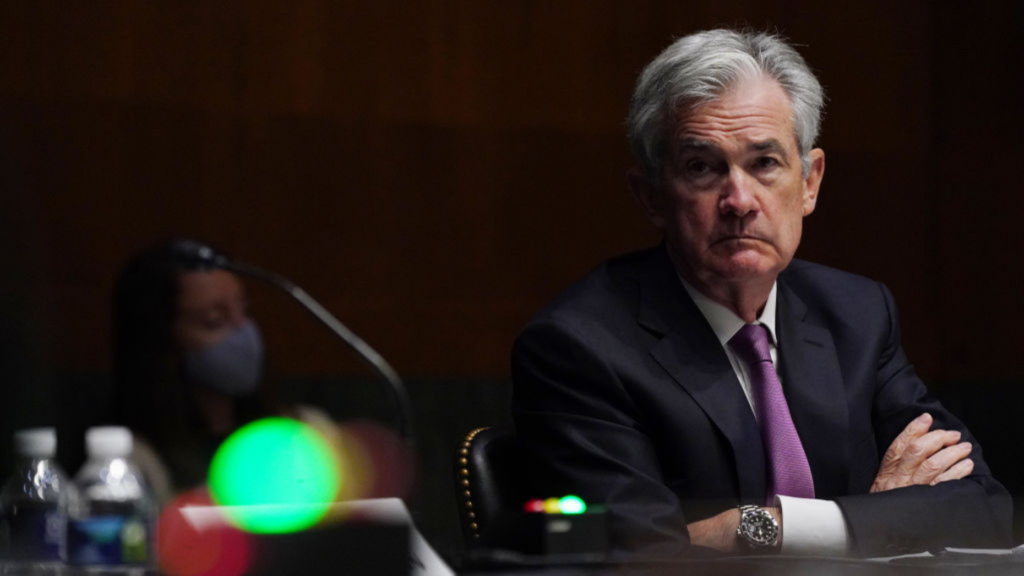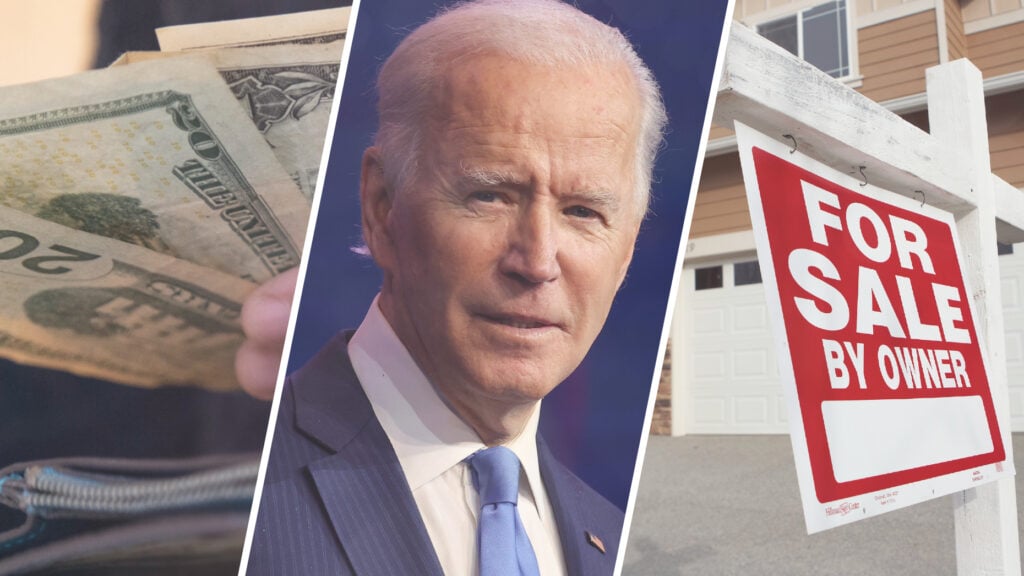While an abrupt shift in policy isn’t expected, Fed Chair Jerome Powell affirms that, “If things come in better than we expect, then we’re prepared to do less” tightening.
Stock market turmoil and continued economic uncertainty had emotions running high this week — so high that Redfin Chief Economist Daryl Fairweather managed to stir up a bit of a hornet’s nest on Twitter by simply stating a fact: The Federal Reserve will take a more cautious approach to rate hikes if the job market softens.
“You guys do realize that the Fed can change its mind on monetary policy right?” Fairweather tweeted Thursday. “If the Fed decides that inflation is heading in the right direction and the risks to unemployment are too high, the Fed will moderate tightening.”
You guys do realize that the Fed can change its mind on monetary policy right? If the Fed decides that inflation is heading in the right direction and the risks to unemployment are too high, the Fed will moderate tightening.
— Daryl Fairweather ? (@FairweatherPhD) May 12, 2022
Fairweather’s timing — with inflation continuing to run hot, much of the debate around the Fed’s next move is whether it will raise the federal funds rate by 50 or 75 basis points at its next meeting — seemed to strike a raw nerve with some.
“Ahhhh…I knew these tweets would come from the RE ‘economists,’” responded one critic, Joshua Fausset. “‘Please, big mama Fed! Please don’t take away my only way to swallow free, fat chunks of future worker wealth into my glutted facade of a housing market!”
John Wake, a “mostly retired” real estate agent who posts analysis on the website RealEstateDecoded.com, had a more sympathetic reaction.
“Is there a sector that is more sensitive to interest rates than ours?” Wake replied. “But the Fed keys on employment & inflation. By the time employment reacts to lower rates, they’ve started a real estate boom. By the time inflation reacts to higher rates, they’ve started a real estate bust.”
In an interview on Minnesota Public Radio’s Marketplace on Thursday, Federal Reserve Chairman Jerome Powell made it clear that Fed policymakers are not currently planning to implement an abrupt shift in policy because of worries about unemployment.
“There’s more demand (for workers) than there are people to supply their labor,” Powell told host Kai Ryssdal. “So that’s not a healthy situation for an economy because it results in high inflation.”
But Powell— who was confirmed by the Senate on Thursday to a second four-year term — did emphasize that future decisions will be based on data.
Although half-point rate hikes are likely at each of the Federal Open Market Committee‘s next two meetings, Powell said, “If things come in better than we expect, then we’re prepared to do less. If they come in worse than when we expect, then we’re prepared to do more.”
“Do more” might even include a 75 basis point rate hike, if warranted, Powell suggested when pressed by Ryssdal if that option was off the table (a basis point is one-hundredth of a percentage point).
“You’ve seen this committee adapt to the incoming data and the evolving outlook,” Powell said. “And that’s what we’ll continue to do.”
Although many observers are focused on the federal funds rate, mortgage rates have plateaued in the last week after the Fed shed light on its plans to trim its $9 trillion balance sheet. During the pandemic, the Fed’s debt holdings swelled to include $5.76 trillion in long-term Treasurys and $2.7 trillion in mortgage-backed securities.
Now the plan is to start letting those “assets” roll off the Fed’s books. The Fed is just one of many players in bond markets, but a rapid unwinding of its debt holdings could put even more upward pressure on rates.
But last week the Fed made clear it intends to trim its balance sheet in “a predictable manner.” In June, July and August, the Fed will let up to $30 billion in Treasurys roll off the books each month, along with $17.5 billion in mortgage-backed securities.
Although the plan is to double the pace of debt rolloffs after three months, it’s a more cautious approach than advocated by some inflation hawks, who would like to see the Fed unwind all of its mortgage holdings at a faster pace.
Since the Fed announced its plan to trim its balance sheet on May 4, bond markets have stabilized, with yields on 10-year Treasurys falling below 3 percent.
After rising more than two full percentage points this year — from 3.409 percent on Jan. 3 to 5.593 percent on May 6 — rates on 30-year fixed-rate mortgages have come down 14 basis points, to 5.441 percent as of Thursday, according to the Optimal Blue Mortgage Market Indices (OBMMI).
Mortgage rates level off
Bill McBride, author of the CalculatedRisk Newsletter, notes that home prices are a key component of inflation. He’s expecting annual home price appreciation to either slow to the mid-single digits, stall or “bust” — decline over the next few years.
McBride sees a stall as the most likely scenario. But if there’s a bust, it “would be nothing like the decline in house prices following the housing bubble.”
So McBride is looking back 40 years for clues as to what the Fed might do next.
“In the ‘78 to ‘82 period, when house prices stalled, the Fed raised rates significantly to slow inflation,” he writes. “The current Fed is taking similar steps, although inflation is currently lower than in the late ‘70s.”
Since housing “is a key transmission mechanism” for Fed policy, “these house price scenarios depend on how quickly inflation returns to the Fed’s 2 percent target. I’m assuming 30-year mortgage rates will stay in the 5 percent to 6 percent range for some time.”
Get Inman’s Extra Credit Newsletter delivered right to your inbox. A weekly roundup of all the biggest news in the world of mortgages and closings delivered every Wednesday. Click here to subscribe.
Email Matt Carter



 Are You Interested in West Eleventh Residences Miami?
Are You Interested in West Eleventh Residences Miami? Are You Interested in ONE Park Tower by Turnberry?
Are You Interested in ONE Park Tower by Turnberry? Are You Interested in Diesel Wynwood Condominium?
Are You Interested in Diesel Wynwood Condominium? Are You Interested in Five Park Miami Beach?
Are You Interested in Five Park Miami Beach? Are You Interested in Cipriani Residences Miami?
Are You Interested in Cipriani Residences Miami? Are You Interested in Bentley Residences Miami?
Are You Interested in Bentley Residences Miami? Are You Interested in Baccarat Residences Brickell?
Are You Interested in Baccarat Residences Brickell? Are You Interested in Aria Reserve Miami?
Are You Interested in Aria Reserve Miami? Are You Interested in 888 Brickell Dolce & Gabbana | Miami?
Are You Interested in 888 Brickell Dolce & Gabbana | Miami? Are You Interested in 600 Miami WorldCenter?
Are You Interested in 600 Miami WorldCenter? Are You Interested in HUB MIAMI RESIDENCES?
Are You Interested in HUB MIAMI RESIDENCES? Are You Interested in WALDORF ASTORIA RESIDENCES?
Are You Interested in WALDORF ASTORIA RESIDENCES?